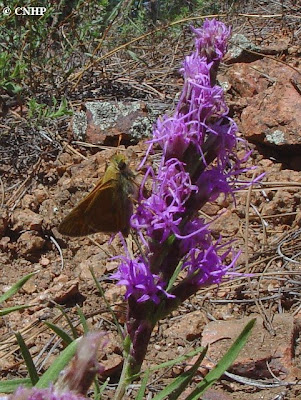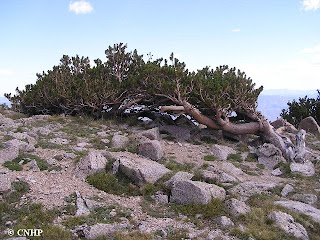This site was visited in 2007 as part of the Boulder County Inventory. The North St. Vrain in northwestern Boulder County east of Allenspark is one of the few remaining roadless canyons along the Front Range. Here the North St. Vrain Creek and its tributaries have carved deep, narrow canyons through the granite outcrops. The surrounding slopes support an extensive mosaic of ponderosa pine forest, shrublands, grassland openings, and cliffs and rock outcrops above the riparian corridors.
The ridgelines and rocky outcrops of the North St. Vrain site support one of the largest known concentrations of the globally rare Larimer aletes (Aletes humilis) in the world. This species is narrowly endemic to Silver Plume granite in the montane zone of the Colorado Front Range, where it thrives in the shallow, gravelly surface soils around rock outcrops. Other important elements within the site include the globally vulnerable wavy-leaf stickleaf (Nuttallia sinuata) and the globally imperiled (G2/S2) Rocky Mountain cinquefoil (Potentilla rupincola). In addition, the site contains excellent examples of montane shrublands and grasslands, as well as riparian forest, shrublands, and willow carrs.
Aletes humilis (low-growing plants in foreground) in its favorite habitat.





















